So far UK grocery is lagging behind when it comes to cashless. But with a growing appetite among consumers for state-of-the-art payment systems it’ll need to catch up. And fast
Late last year, Brunel University students became the first UK shoppers to pay for groceries with only a touch of their fingertips. The high-tech cashless payment technology installed at their local Costcutter used a system that scans the ‘fingerprint’ of veins that make up a unique biometric map for each of us, removing the need for any cash, cards or phones.
It is just one experiment among many in the fast-paced payments sector. Waitrose was the first to trial an entirely cashless store in the UK in 2016. Several UK supermarkets, including Sainsbury’s and the Co-op, are experimenting with smartphone-based scan-and-pay-style solutions. Many technology newcomers are offering variants of mobile, biometric and sensor-based payment solutions.
The opportunities these technologies present to transform the shopping experience into a faster and less stressful one for shoppers, and a more efficient one for grocers, are compelling. As far back as 2015, cashless payments had overtaken the use of coins and notes in the UK, with debit cards and online transactions becoming the norm, even for small sums. So, with the rapid adoption of contactless, mobile payments - and even biometrics - is the next step the death of chip and pin payments altogether? If so, is UK grocery ready?
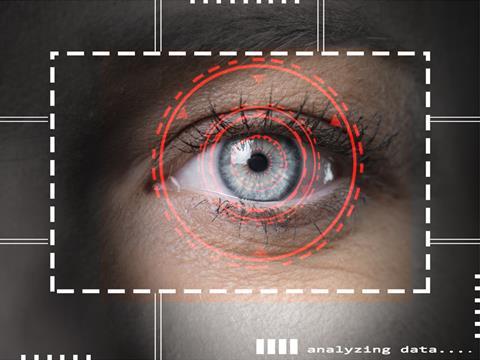
Is a cashless future at our fingertips?
Helped by a £5 initial sign-up incentive - and some effort to educate them - students shopping at the Brunel University Costcutter have become enthusiastic converts to the Fingopay biometric payment reader since it was installed there in September 2017.
“There was a job to do explaining that it works with finger vein technology, that it is encrypted, safe and will not be used for anything else, but it has worked really well,” says Arnaud Leudjou, retail manager for the store.
The technology works by taking a 3D scan of a shopper’s finger at the till and links this unique biometric map to their bank account. These bank details are stored with payment provider Worldpay and are as transparent to shoppers as any other form of online banking. The beauty is students can show up without cards, phones or even a form of ID and pay for their food in as little as three seconds.
Convenience and superior security to contactless are the main consumer benefits, while for Costcutter a forgotten wallet or a flat phone battery no longer means a lost sale and sales are processed faster, says Leudjou. “It helps especially in high traffic retail outlets like ours.”
A hoped-for second-generation version of Fingopay able to verify customers’ age will help do away with the need to ID buyers of tobacco or alcohol too. The ability to do targeted promotions and to run a virtual loyalty scheme without the need for loyalty cards is compelling, says Leudjou. “That will drive footfall. For convenience stores it gives them a database that most don’t have.”
Leudjou believes it or other biometric systems have great promise owing to this convenience and security. “The evolution of payment technology is always around convenience and security and Fingopay ticks those boxes.”
UK-based startup Saffe is betting on a future that takes biometrics to the next level, offering ‘payment by selfie’ - no smartphone or biometrics reader required.
Its facial recognition technology simply enables a camera to verify identity based on machine learning IP, preventing fraud both on and offline. It secured its licence from the FCA late last year and is currently in trials with a retailer in Shoreditch.
Look beyond the UK to the multiple new cashless, cardless solutions that are finding rapid mass adoption already and it might be tempting to believe so.
In China, the growth rates for cashless payments are extraordinary. Last year consumers used Alipay, which has about 54% of the cashless payment market, to make $8.7 trillion in payments, according to Barclays.
In India, WhatsApp is exploding in popularity as a payment method and becoming a contender with well-established cashless mobile app Paytm, which has 300 million users and seven million offline merchants and has grown fourfold by transaction value in the past year. And let’s not forget Africa. In Kenya the M-Pesa cashless system is used by 96% of households.
In the US, Amazon is trialling its checkout-free Amazon Go grocery store using an array of sensors to detect what shoppers collect in their baskets and billing them as they leave the store. In Austria, MediaMarktSaturn, Europe’s largest consumer electronics retailer, has opened its first cashier-free store.
In Sweden, meanwhile, cashless payments are now de rigueur. Cash accounts for only 2% of transactions there and it is expected to fall below 0.5% by 2020 (compared with 42.3% for the UK in 2016).
Back in the UK though, if the innovation track record of the grocers in cashless is anything to go by, adoption of the next wave is more likely to be a slow motion revolution. Sainsbury’s, for example, didn’t offer contactless payment until November 2016 and contactless payments still only made up 7% of the total number of payments in the UK that year.
Shoppers eager to switch
The daily payment experience in store is still too often an underwhelming one, says Matthew Wright, associate technology advisory partner for Ernst & Young. “The grocery industry has failed to keep up with the pace of change consumers are expecting.
“The experience is still one of standing at a checkout waiting in line for someone to ring a bell for more cashiers. Retail should either be theatre or be seamless and bulk mass market retail is stuck between the two.”
Shoppers certainly seem eager to make the switch to smoother payment methods. Mobile payments are growing fast, up 328% in 2017, according to Worldpay. And surveys suggest more than half of consumers are ready for the death of the card, while younger users are comfortable adopting biometric technologies.
Our growing ease with smartphone technology is another key to the growing willingness to adopt an increasing proportion of cashless payments, says Mike Tattersall, chief commercial officer of venture capital firm True, an investor in UK scan-and-pay app Mishi Pay. “Consumers are becoming increasingly comfortable with the security features on their phone. It is predicted that 64% of consumers plan to use a mobile wallet in 2020. We can say with certainty consumers and retailers are aligned on the benefits of cashless.”
Consumers also seem receptive to the technology that will underpin new kinds of cashless, especially younger users. Three-quarters of 16 to 24-year-olds would have no problem using biometric security, with 69% expecting it to be faster and easier than a password or a PIN, according to a survey by Visa Europe.
Meeting these expectations will be a challenge for a number of reasons, though. One is that the technologies and approaches being adopted in emerging economies may not work in more established markets such as the UK, which are wedded to old habits and old technologies. It is unclear which technologies will emerge as commercially viable, says Tattersall.
’I would expect we will see cards disappear and integrated into our phones’
“Pilots and trials will be important in sifting out where the sweet spot will be, although biometrics will likely play a more important role in cashless payments as the security trends and developments we see in smartphones and watches come to the fore.”
The QR code-based cashless systems used in India and Asia, for example, work well to serve markets where many are unbanked, but offer inferior security, says Shaun Puckrin, Worldpay UK chief product officer. “We should not lose sight of the advantage of cards. The ENB standard is rigorous. Cards have good security.”
At the other extreme of the technological spectrum, Amazon Go’s sensor and camera-heavy approach to cashless payments, while impressive, is likely to be too expensive and complex to gain wide use, says Mustafa Khanwala, Mishipay’s co-founder and CEO.
Mobile a serious contender
Unsurprisingly, Khanwala believes mobile-based scan and pay apps are serious contenders for the next wave of mass cashless adoption. As well as the shopper convenience scan and pay apps offer, they also enable retailers to free up staff for more productive work, and to derive greater insights into shopper behaviour.
But Khanwala concedes the technology adoption process is not likely to match the rapid rates experienced elsewhere. Large grocers are hobbled by unwieldy internal processes and too often make the mistake of trying to build their own costly cashless processes and operations, rather than adopting general purpose payment technologies.
This can prevent them opting for newer technology that can be deployed faster, and that can change and adapt to evolving consumer needs, he adds. “That attitude will need to change.” The solution is for retailers to experiment with projects that have small but defined parameters, and be prepared to learn from failures and successes fast, says Khanwala. “They need to limit the scope of the trials in terms of the KPIs they want to achieve. Any more than five you are getting into a problem zone, setting yourself up for failure without learning from it.”
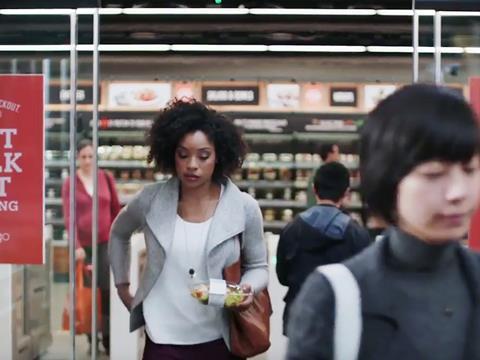
There’s an app for that: how the grocers are taking payments mobile
Sainsbury’s was slow to keep up with the switch to contactless (with the technology only available in all its stores by March 2017) but only six months later it announced trials of a new app that would allow shoppers to skip the tills completely. Currently being trialled at its London Euston Station store, the app allows customers to scan items and pay using the app on their mobile. The mult is “some way off rolling this out,” but is “keen to understand how we can take the concept and develop an offering that is genuinely useful,” says head of customer experience Natalie Dunn.
The supermarket isn’t the only grocer dabbling with app technology. As far back as 2016 Tesco had introduced its PayQwiq app, allowing customers to swipe their phone at the till rather than faff with cards or cash, and in September it announced an upgrade. The rebranded Tesco Pay+ has no minimum spend, can be used in all Tesco stores and forecourts, and offers users bonus points.
Amazon has leapfrogged its rivals on this front, opening its first checkout-free store in the US in January. Shoppers download the Amazon Go app, fill their baskets and walk right out. Sensor technology detects what they’ve picked up (or put back), links this to their account and sends them virtual receipts. But now the Co-op is trialling something similar at its Manchester HQ. Everyone’s at it.
Another reason why adoption of new cashless tech may be relatively gradual is that UK grocers are encumbered in many cases with unwieldy legacy PoS not designed for the digital age. This makes adapting or even trialling new technology challenging, says Wright. “My sense is they are approaching the end of their useful life and are an impediment to deploying innovation at scale and rapidly.”
Grocers are being held back by a lack of investment over the past 15 years and the stakes are high. “Most were built in a pre-API world and can’t be easily interfaced to a new system. The vendors will say they have kept pace but they weren’t designed for the internet age. The ease of plugging in a new payment method is nowhere near where it needs to be,” says Wright.
Trial and error
This need not be a serious stumbling block, however, says Tattersall. “For retailers with large networks and legacy systems it will be a costly move to roll out an entirely new, limited hardware solution. However, with the choice of technologies available in fintech there are lots of solutions available that offer workarounds to legacy hardware, so a full upgrade of hardware may not be necessary. It will likely be a case of trial and error to find a technology that fits.”
Shiny new technology may not, in any case, represent the most immediate opportunity for the grocers when it comes to innovating in cashless payments. The advent of Open Banking in January, which forces the nine biggest UK banks to open up their precious data, could be the grocers’ chance to establish direct cashless payment relationships with customers and disintermediate the acquirers, potentially offering significant translation savings and the chance to develop closer relationships with shoppers.
Most large grocers already have a financial services arm and so will not find the necessary FCA regulation onerous. Open Banking holds promise, not least the fee savings of anything from 0.5% to 2%, and may help speed up the death of the card, says Jurgen Wagner, head of KPMG’s UK payments practice. “I would expect we will see cards disappear and integrated into phones. Open Banking could lead to apps that perform a push payment you initiate from your phone. Clients in financial services and retail, including some grocers, are increasingly aware of the opportunities.”
By establishing direct payment relationships, grocers can benefit in other ways, says Tattersall. “The ability to offer frictionless shopping experiences online and offline can be a key differentiator. Consumers value this as a core component of great customer service. This can drive further loyalty and several players have developed innovative technologies that blend payments with loyalty to be truly value additive.”
Applications like Bink, which adds loyalty points automatically without the need of a shopper to produce a loyalty card, are an example of the opportunity.
There has to be a reason for shoppers to adopt direct retailer payments, however, says Wagner. “What is in it for your customers? Why would the consumer not use their card any more? People may just stick with what they know. Adoption will be slow without trust. That is a baseline that needs to be in place.”


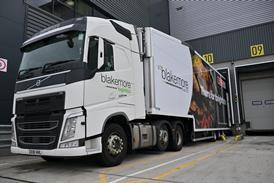





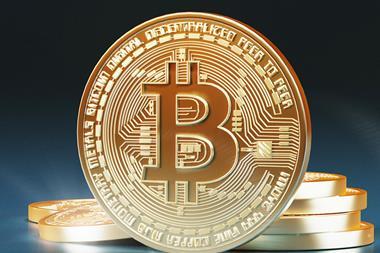



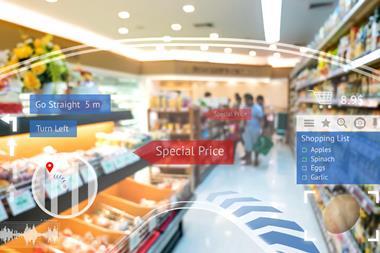




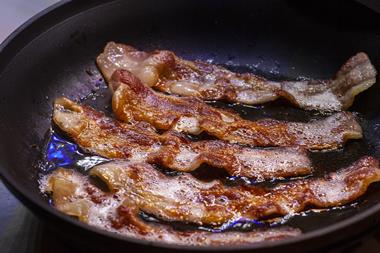
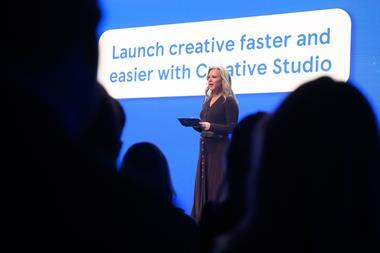
No comments yet